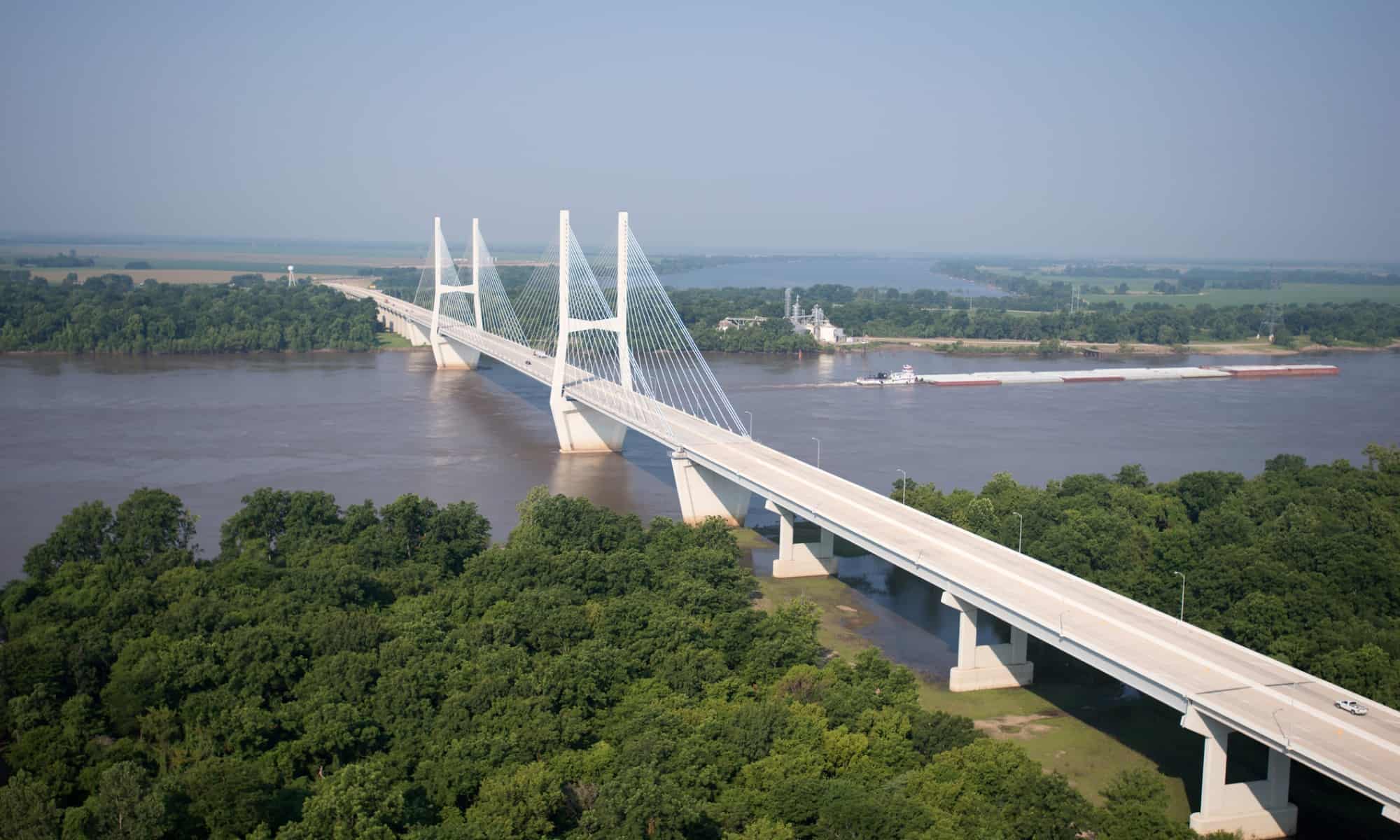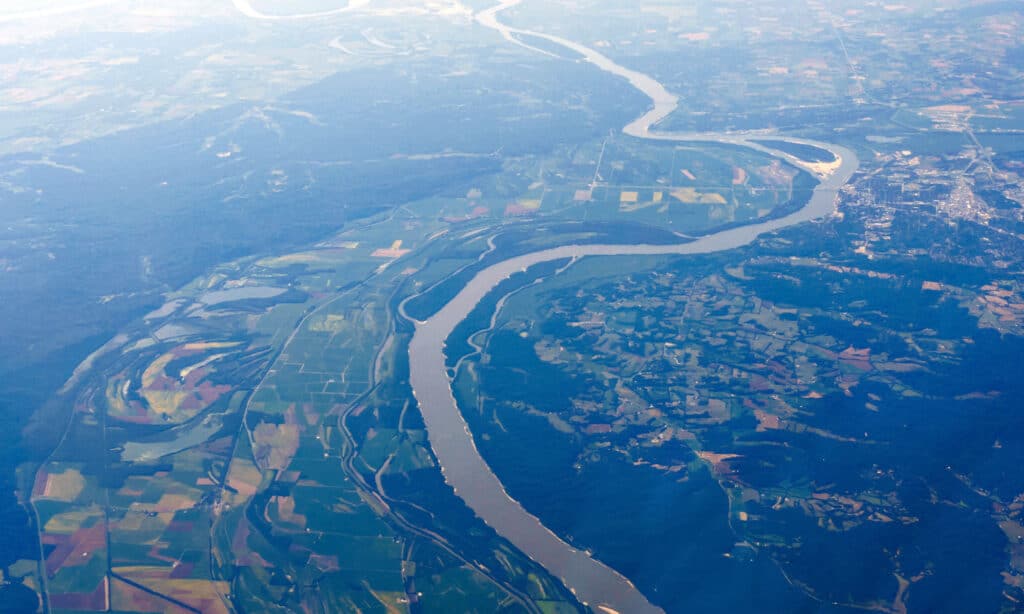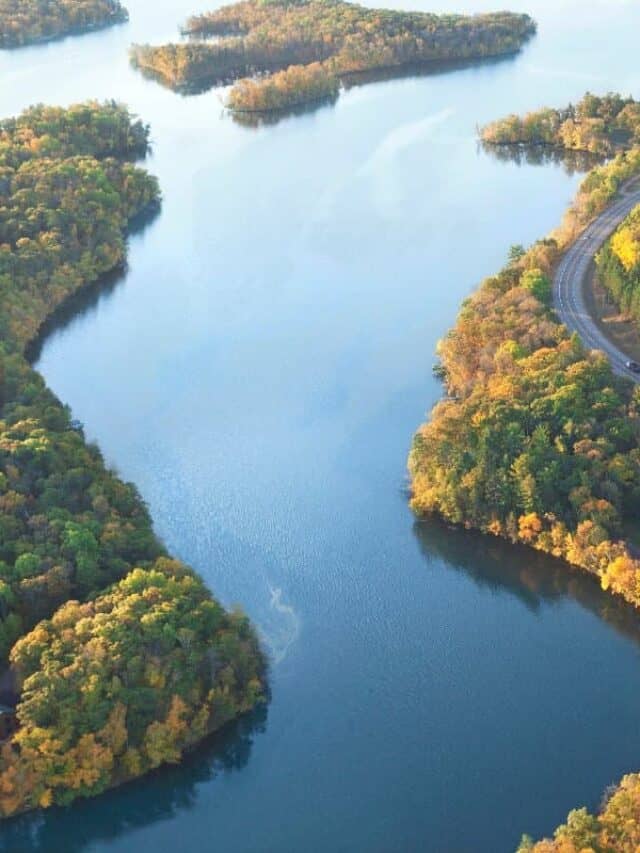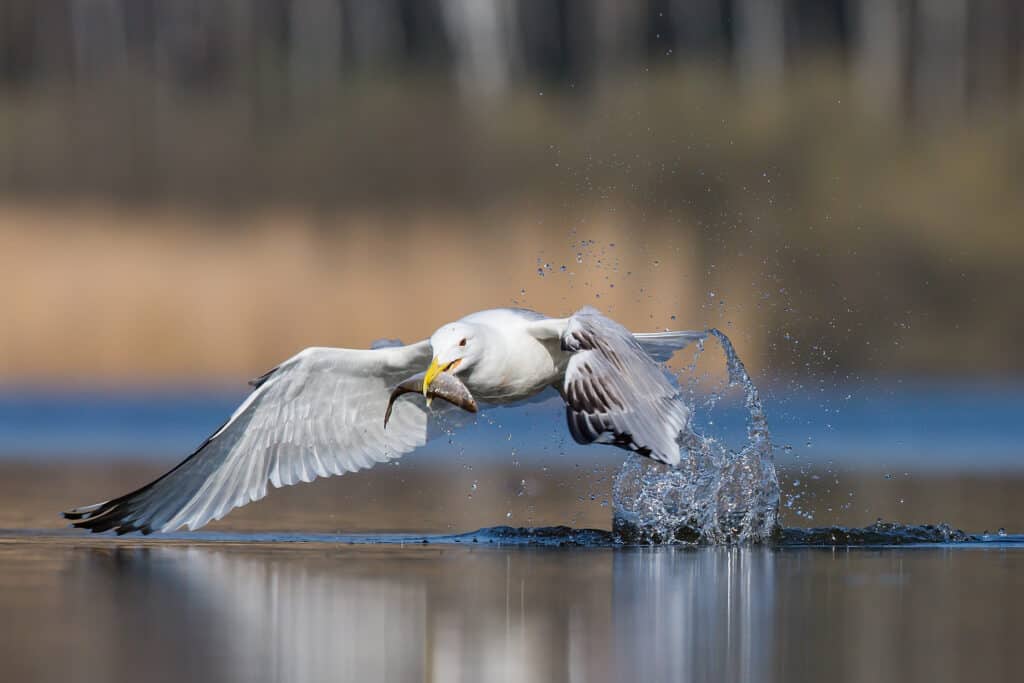Continue reading for our analysis...

The Mississippi River flows from Minnesota down to Louisiana, emptying into the Gulf of Mexico. But just how big is the Mississippi River? Watch the below video to get a glimpse of the massive network of rivers that feed into the Mississippi and finally end up in the Gulf.
The video starts where the Mississippi River starts: Lake Itasca, MN. Did you know that the Mississippi travels about 2,340 miles? The widest part of the Mississippi River is 11 miles wide at Lake Winnibigoshish near Bena, MN. The deepest part is 200 feet deep in New Orleans. When it reaches the Delta and the Gulf of Mexico it discharges at a rate between 200,000 and 700,000 cubic feet per second!

At its deepest point, the Mississippi River can reach 200 feet.
©RaksyBH/Shutterstock.com
It passes through 10 states including Minnesota, Wisconsin, Iowa, Illinois, Missouri, Kentucky, Tennessee, Arkansas, Mississippi, and Louisiana. The video shows a map of the U.S. with the river’s journey highlighted in blue.
There are three major rivers that flow into the Mississippi. To the northwest is the Missouri River, which starts in Montana and is just slightly longer than the Mississippi itself! Then there is the Arkansas River, which starts in the Rocky Mountains near Leadville Colorado. It flows into the Mississippi in Arkansas. Lastly, the Ohio River, which actually starts in Pittsburgh, Pennsylvania, flows along the southern border of Ohio down to Cairo, Illinois where it joins the Mississippi.

The Mississippi River empties into the Mississippi Delta and the Gulf of Mexico in New Orleans, Louisiana.
©Sean Pavone/Shutterstock.com
Next, the video explains how tens of smaller rivers and streams flow into all of these rivers. Basically, all of the waterways are highlighted in blue on the map. It explains the drainage system covers 1.24 million square miles — the same area as two Alaskas!!
Additionally, water from 31 states and two Canadian provinces feeds into the drainage system. This makes it the fourth-largest watershed in the world. The Amazon Basin, including the Amazon River and all of the rivers and streams that feed into it, is the largest watershed in the world. It covers around 3 million square miles!

Mississippi National River and Recreation Area covers 54,000 acres of land.
©iStock.com/Willard
Animals That Live Around the Mississippi River
This long, majestic river is teaming with life in and around it. The Mississippi River provides food and shelter for birds, fish, and many mammals. There are more than 120 species of fish in the Mississippi! These include:
Also, native mussels are making a comeback after being nearly wiped out by pollution. Some species include the Higgen’s eye and winged mapleleaf.
Many migrant birds call the Mississippi River valley home. It is a birdwatcher’s paradise! Check these out:
Mammals take advantage of the river’s habitats, including otters, beavers, coyotes, and white-tailed deer. Once in a while a black bear and mountain lion might stop for a drink. Don’t forget about the beneficial insects, reptiles, and amphibians that reside in this river valley.

The herring gull makes its home in the Mississippi River valley.
©Lukas Pavlacik/Shutterstock.com
An aerial view of the Mississippi running through fields is shown as the video shares that 92% of the nation’s agriculture exports are from the Mississippi Watershed area. Next, you see a couple of cows munching on some feed. The statistic that 78% of the world’s export of feed grains comes from this area is posted. Then the aerial view of a large barge floating on the Mississippi shows that 60% of grain exports are shipped out on the Mississippi.
Lastly, the final image is the map of the U.S. with all of the Mississippi River watershed highlighted in blue, so you can see just how massive the connections of rivers and streams are. It closes with the quote, “Without this watershed, the Mississippi River wouldn’t be the resource it is today.”
Thank you for reading! Have some feedback for us? Contact the AZ Animals editorial team.







